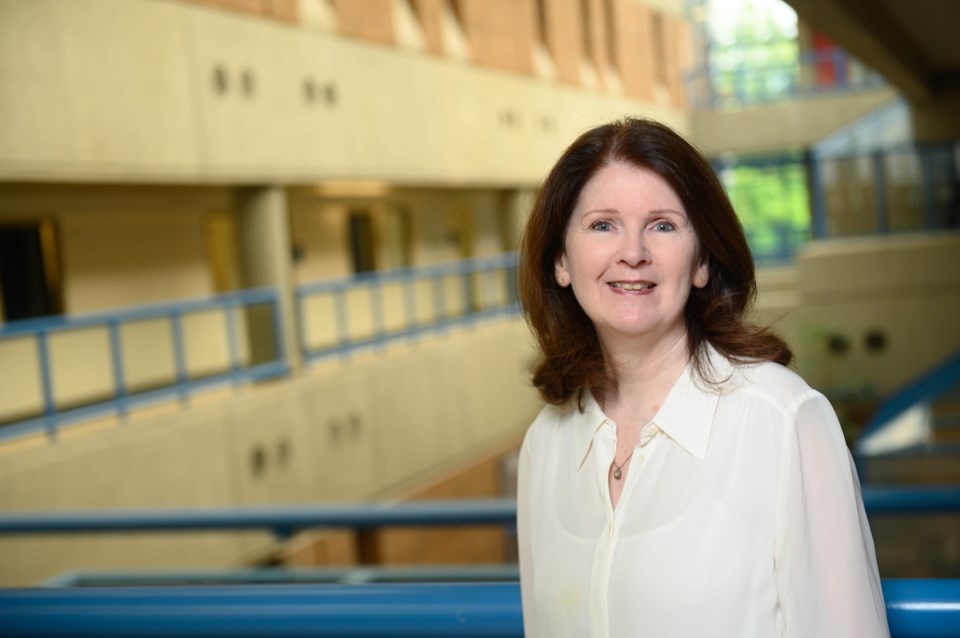Physically distancing and self-isolating — hunkering down at home in your safe space — have been effective tools in flattening the curve of COVID-19 cases in B.C., but for those with pre-existing social anxiety, it could mean a few psychological steps back.
As the province slowly re-opens, going back to work, school and day-to-day activities may become even more difficult for people with mental-health challenges like agoraphobia, the fear of being outside, explained Dr. Anita DeLongis, a professor of psychology at UBC.
“If you have anxiety about engaging other people and going out in the world, if you’re socially isolated for a long time, it’s going to be a challenge to re-engage,” DeLongis said.
DeAngelis encourages people to reach out to others on a regular basis with some purpose or structured interaction, like a task, which can make it less anxiety-producing to engage with others.
“It’s really important to stay engaged,” DeLongis said. “If you find yourself retreating and getting less comfortable with those interactions, I say make a date with somebody in your network.”
New ways to connect with others have come to the forefront during the COVID-19 pandemic, like with the House Party app, video chatting and online games and activities.
For Pathways Clubhouse, which serves people with mental-health issues and whose whole modus operandi is premised on social interaction and regular contact between members and staff, the pandemic changed how all their activities took place — they closed their doors soon after health orders came down to limit social interactions.
The non-profit launched a virtual Facebook clubhouse, and organizers have done a lot of outreach work, for example, delivering meals to club members.
But people are still lonely and needing company, explained Pathways’ executive director Dave MacDonald.
Now, with the easing of restrictions, Pathways is trying to figure out how to re-open operations at their physical location on Granville Avenue, MacDonald said, but things won’t function the same way as before. They will have to see how many members can be physically present at a time and how to safely operate under provincial health orders.
They’ll also have to curb their displays of affection.
“We’re huggers — that ain’t gonna happen,” MacDonald said.
Some members are nervous to come back to Pathways Clubhouse, worried that it’s still not safe, MacDonald added.
DeLongis is concerned about the long-term effect the COVID-19 pandemic will have on people’s mental health even as society eases out of the most confining restrictions.
She previously took part in studies of other health crises, for example, SARS in 2003, and she is now part of a group of researchers conducting a survey of 7,000 people across the globe to measure their anxiety levels during the COVID-19 pandemic, how they’re responding and what’s most beneficial to their mental health, with weekly check-ins.
Early into the pandemic, however, the group of researchers realized this was going to be a big crisis and they added a post-traumatic stress disorder (PTSD) scale into the survey.
Preliminary results from their study seem to show that focusing on other people helps reduce anxiety, DeLongis said.
During the pandemic, old routines have been disrupted, but it’s human nature to want to have control of one’s life.
Establishing new routines can help regain that sense of control, DeLongis said.
“When people integrate this strategy of ‘what can I do to help people in my network?’ — that’s when they seem to be able to refocus, get a new routine and move forward in a way that reduces their anxiety,” DeLongis added.
Banging pots at 7 p.m. for health-care workers makes people feel less helpless because they are showing support for those on the frontlines, DeLongis said.
It also makes them feel part of a community, she added.
Other examples of reaching out include delivering groceries to older adults or reading to grandchildren online to give parents a break while engaging with young children – something her husband has been doing with their three-year-old granddaughter.
While those with pre-existing mental health problems are especially vulnerable during a situation like the current pandemic, DeLongis is also worried about frontline health-care workers thrust into the forefront of this crisis.
A pre-COVID study about emergency medical personnel showed this group struggled already with high levels of trauma, DeLongis said.
But she is especially worried about what this escalated situation will do.
“We saw very elevated levels of post-traumatic stress disorder in that group, which really surprised me how high the levels were,” she said.
“If they’re traumatized in their regular work lives, this is going to be a real challenge to manage.”



